Answered step by step
Verified Expert Solution
Question
1 Approved Answer
*Java Language Aggregation* Instructions: Make a code Using Aggregation Following the Example below With the course, as the super class, Instructor and Textbook as the
*Java Language Aggregation*
Instructions: Make a code Using Aggregation Following the Example below With the course, as the super class, Instructor and Textbook as the sub class. Make a code that showsVehicle as super class. and motercycle and bus as sub classes. attributes to get for car is company of car,model for car,color of car. The super class vehicle should say vehicle. Have Aggregated UML as well for all 3 classes. Need to have at least one method in every code and UML. **Read What textbook says**
I Will Thumbs Up

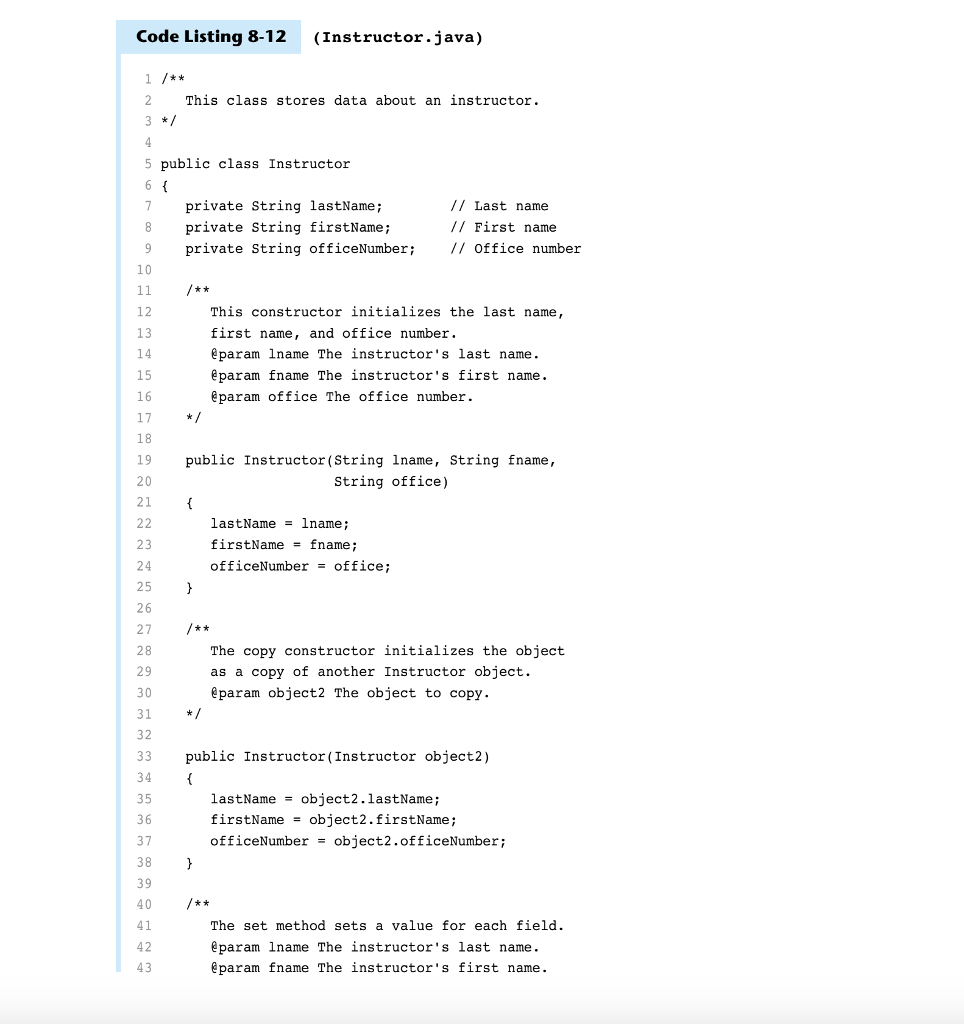
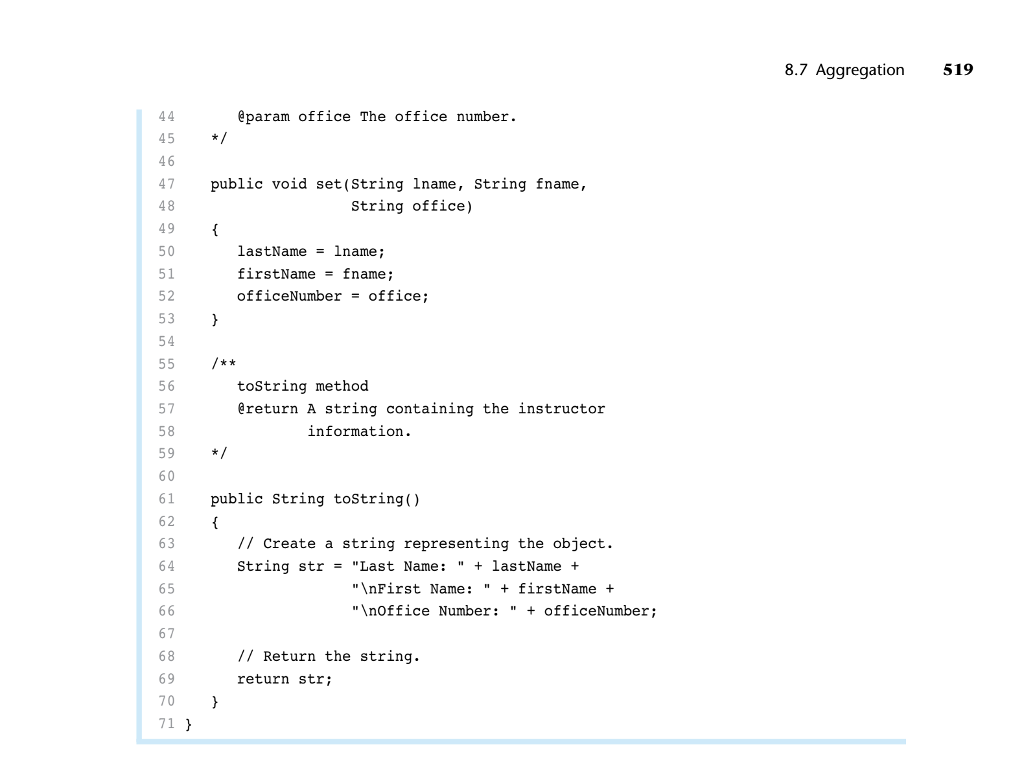
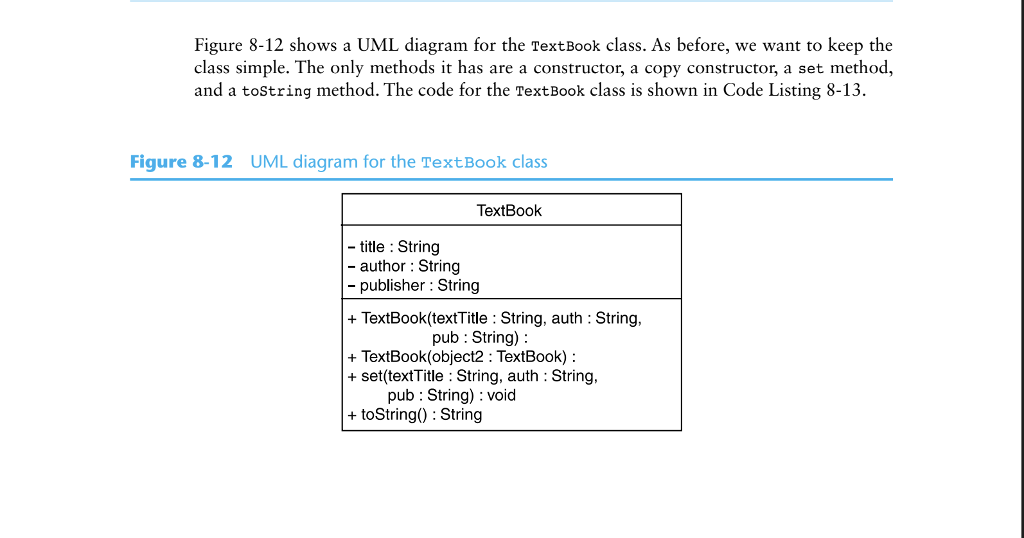
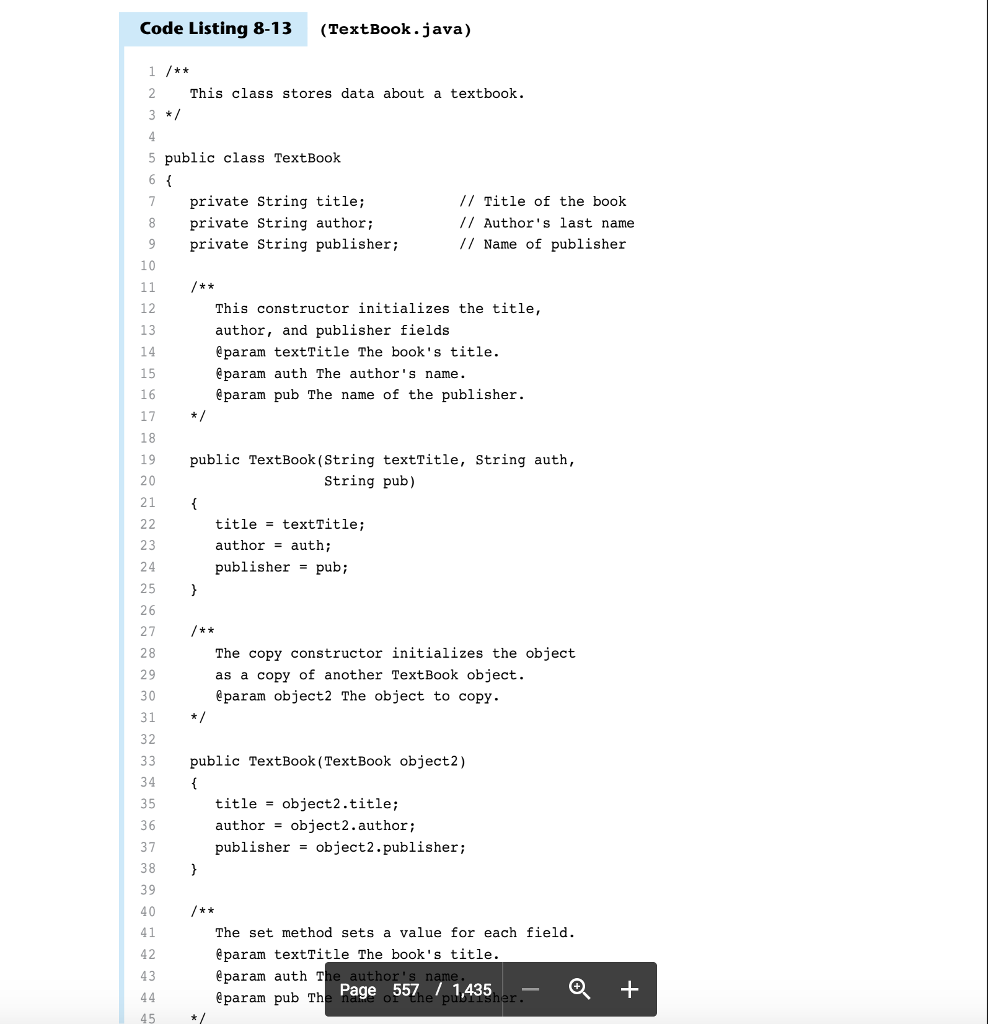
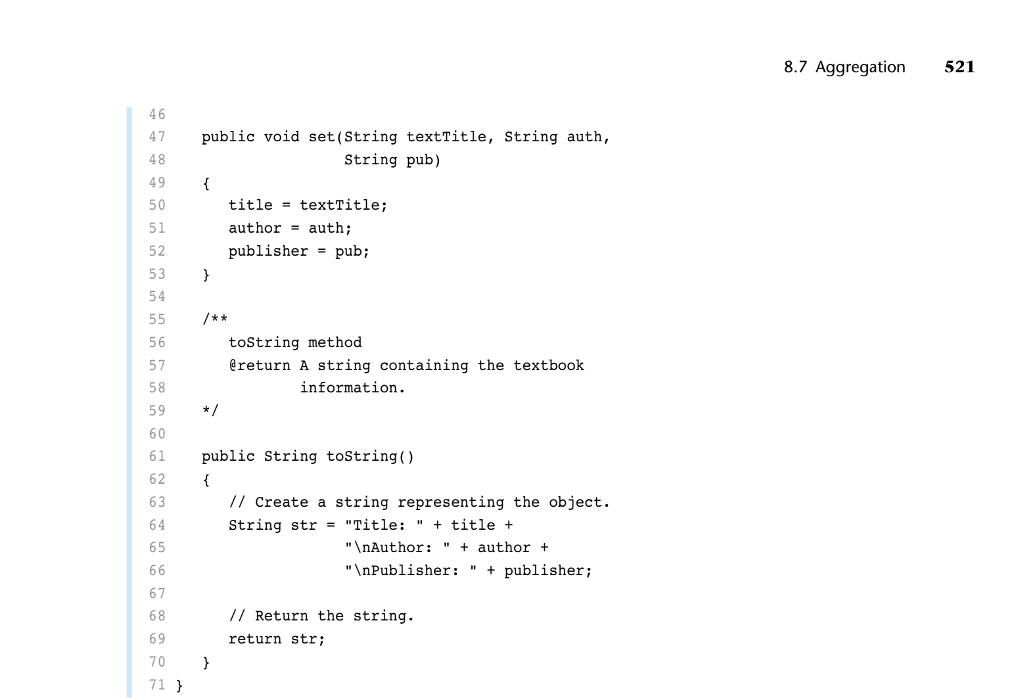
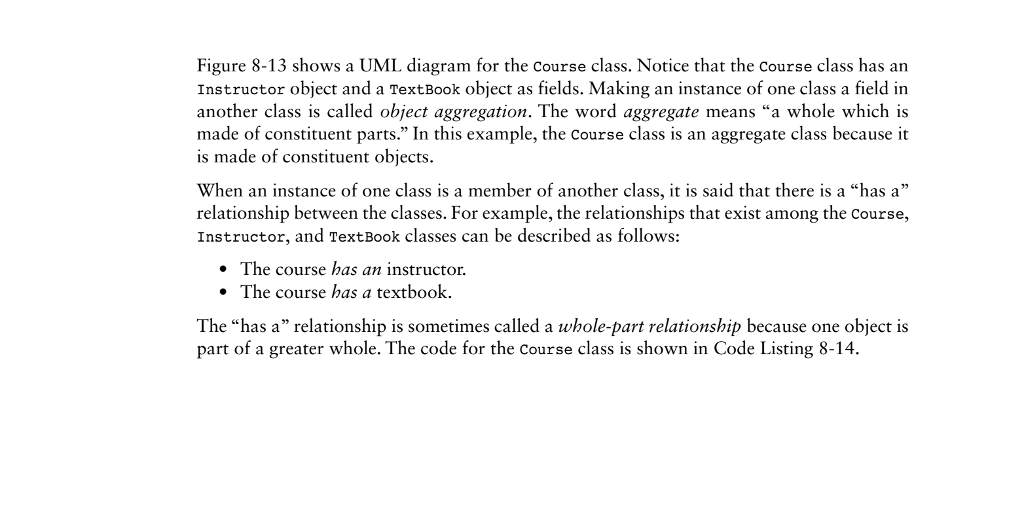
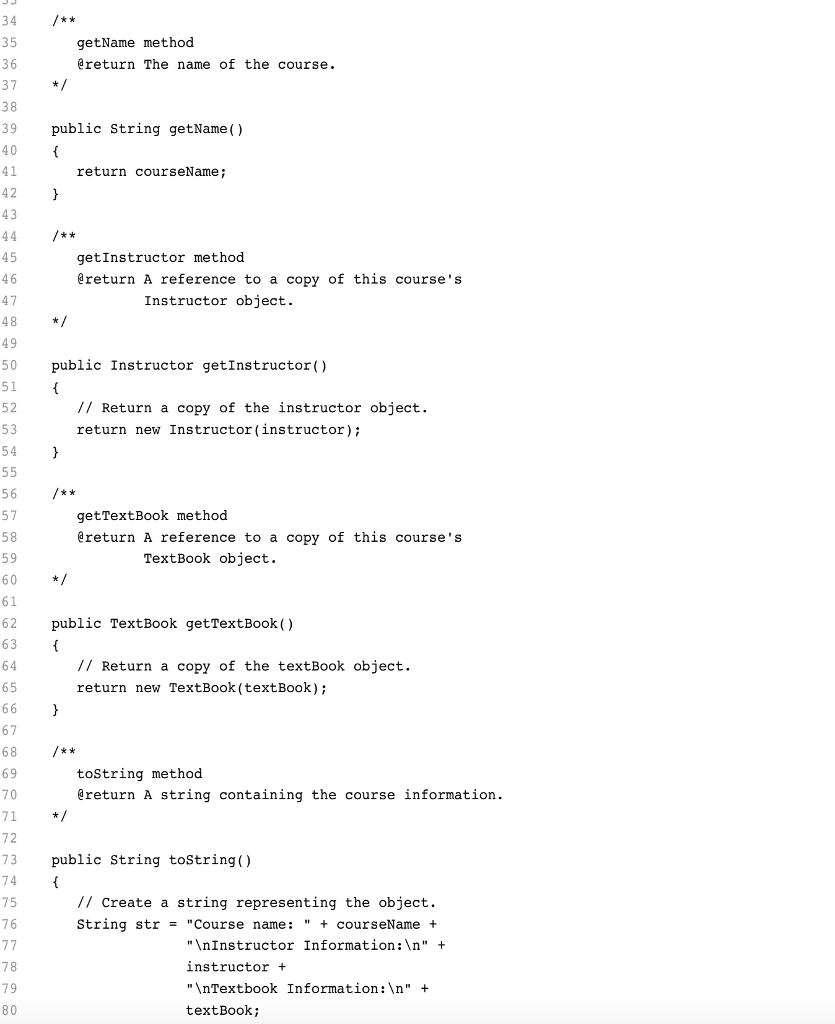

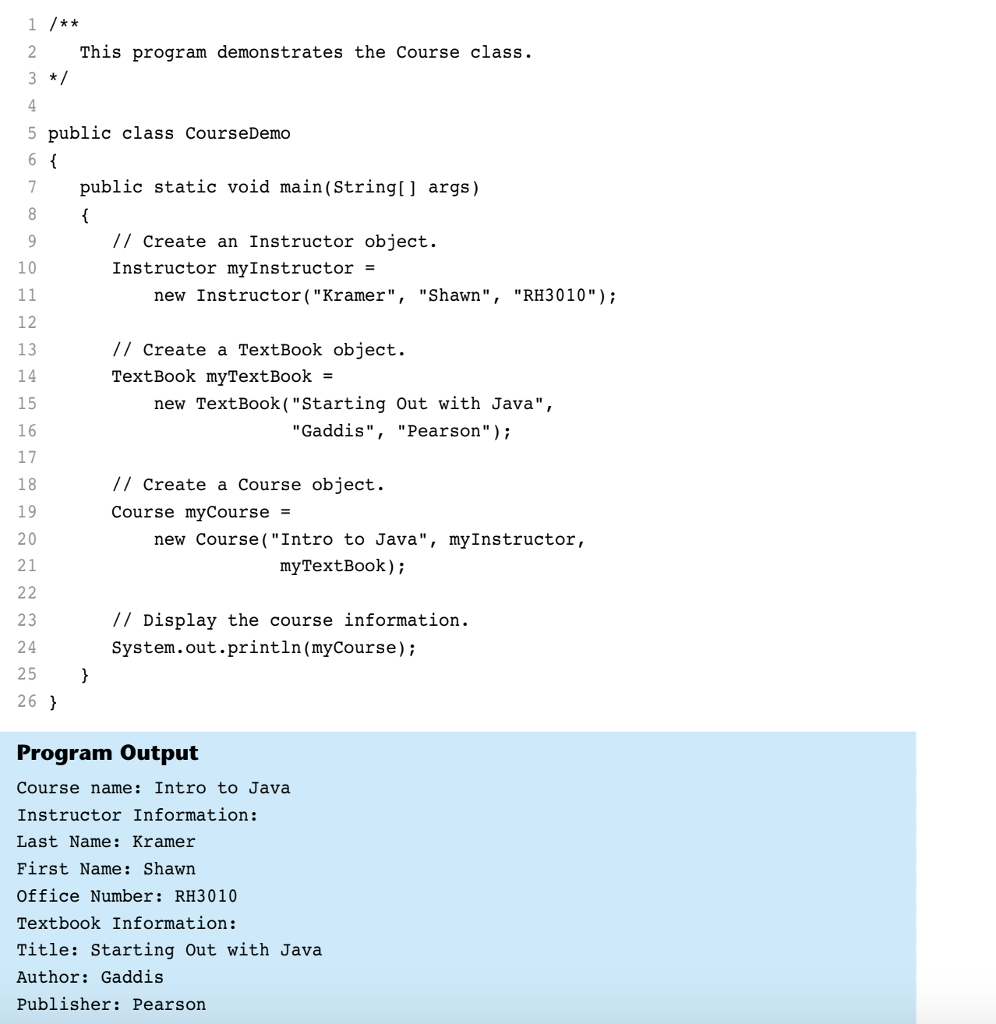
Step by Step Solution
There are 3 Steps involved in it
Step: 1

Get Instant Access to Expert-Tailored Solutions
See step-by-step solutions with expert insights and AI powered tools for academic success
Step: 2

Step: 3

Ace Your Homework with AI
Get the answers you need in no time with our AI-driven, step-by-step assistance
Get Started


